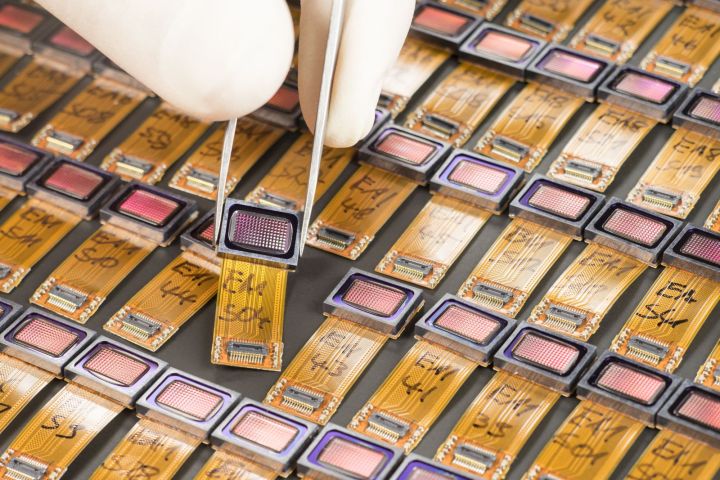
The camera, which includes both a lens and sensor combo, shoots at just 1 megapixel currently, but the developers say the technology could reach four times that, making the tiny camera a possibility for use in the automotive, printing and medical industries.
Mixing the technology with current smartphone designs could allow for use of the technology in a slightly larger size. The research group says that the camera shoots at a much higher resolution than similarly sized cameras, which could allow the camera to be used in robotics and vehicles.
The camera’s multiple tiny lenses are positioned close together in order to capture one section of the image a piece at a time — like the way an insect’s eye works, Franunhofer Institute explains. Each lens is offset so that the a small section overlaps with another piece of the constructed image.
The design — which appears to be similar to the concept behind the multiple silicon pieces Sony recently designed for a tiny lens — allows the entire camera to measure only 2 millimeters thick. While the current prototype has too low of a resolution to be used for snapshots, combining the insect eye lens concept with current smartphone camera designs in future advancements could lead to a 3.5 mm thick version with megapixels in the double digits, which would eliminate that bulge at the back that houses the camera components.
Andreas Brückner, a project manager at the Fraunhofer Institute, explains that current smartphone cameras are about 5 millimeters thick and are created from injection moulded plastic.
“We would like to transfer the insect eye principal to this technology,” Brückner said in a press release. “For example, it will be possible to place several smaller lenses next to each other in a smartphone camera. The combination of facet effect and proven injection-molded lenses will enable resolutions of more than 10 megapixels in a camera requiring just a thickness of around three-and-a-half millimeters.”
The tiny cameras, on display at this week’s Consumer Electronics Show, could also be affordable to manufacture in large quantities, the research group says.
Editors' Recommendations
- An unknown company just set a new standard for smartphone cameras
- This tiny sensor is about to change your phone camera forever
- New 3D smartphone technology could change photography, experts say
- Miniature high-resolution webcams could soon be coming to laptops
- Omnivision’s 200-megapixel smartphone camera will arrive on phones in 2022




